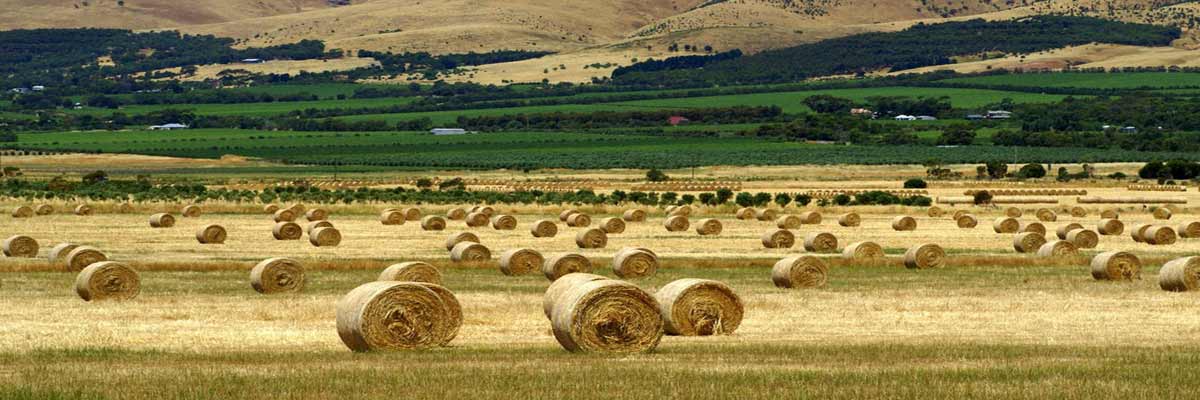Preparing Australian Agriculture for Rising Energy Costs and Water Insecurity
Don’t let the common first name confuse you. The following is a guest post by Aaron Edmonds. Aaron was a 2002 Australian Nuffield Scholar and researched how broadacre agriculture was going to need to adapt to manage the follow through effects of the Peak Oil crisis. Ironically this Scholarship was initially established by the philanthropist Lord William Nuffield, the inventor of the Morris Minor car, where after the Second World War he saw food supplies dwindle to dangerously low levels in the UK. Aaron farms 2000 hectares in the Central Wheatbelt of Western Australia with his family and is pioneering the development and adoption of low input broadacre agriculture. Many thanks to Aaron for permission to republish this essay.
Preparing Australian Agriculture for Rising Energy Costs and Water Insecurity
Aaron Edmonds Conventional agriculture has evolved to the assumption that oil and gas will always be cheap. Large amounts of energy are used in food production making agriculture the third largest energy consuming sector globally. Most people would be aware of the diesel fuel requirement to power the machinery used in crop production. What they would not be aware of is that diesel use is only a small component of the total energy demand in primary production. It is in fact through the manufacture of nitrogen fertilizers used to fuel crop growth where the largest energy liability accrues. To put it into visual perspective, it takes the energy from roughly one litre of oil to produce one kilogram of urea, the most widely used nitrogen fertilizer. To grow wheat in Australia, the energy equivalent from roughly 150 litres of crude oil per hectare is required just to account for nitrogen demand. Then of course there are the petrochemicals and energy required for herbicide and pesticide manufacture. Agriculture in the future will continue to incur fertilizer, pesticide and fuel cost increases at the very least proportional to rises in oil and gas prices. Since October 2006 and for the first time in history, fertilizer prices are actually appreciating at a significantly faster rate than fossil fuel prices. This is occurring largely as biofuel demand ratchets up cereal grain prices and hence is creating massive global fertilizer demand. As hydrocarbon prices resume their long term inflationary trend, nitrogen fertilizer prices have the very real potential to hyperinflate to price rationing levels.Rising fertilizer costs have another less obvious consequence. That being increasingly more arable broadacre farmland throughout the world becomes marginal under conventional practises. That is to say the cost of farming where soil types are poorer (highly leachable), rainfall is less reliable and frosts are more likely has risen to levels where it has become unacceptable to undertake the risk of crop production. Crop failure has never been more costly. Systems must be found that can still produce food and at the same time dramatically reduce total energy use. There will not be one solution or cropping system for the whole world more a whole world of solutions for cropping systems throughout different regions.The basics in determining the future of energy efficient food production need first to be understood when looking for sustainable change. There are three areas in which total energy demand can be significantly reduced and not surprisingly these also bring major environmental gains. One of the most fundamental tasks of sustainability is to turn agriculture from a net energy user to a significant net energy producer particularly in the area of staple food production.Firstly it is highly desirable that crops be perennial in their growth habit, surviving from one year to the next and only requiring planting once. This saves on the need for heavy agricultural equipment and the diesel currently needed to sow common crops like wheat, rice and corn on an annual basis. The environmental gains from a perennial plant are a large carbon sequestering root system preventing soil erosion, enabling use of subsoil moisture to prevent salinity and allowing deep access to historically leached fertilizers and nutrients. Perennial plants are also far more competitive with annual weeds and effectuate a level of drought proofing in having access to out of season rainfall at depth in the soil profile. This provides a kind of buffering capacity from one season to the next.Secondly there must be a legume base to the crop production system. Legumes are plants that enable nitrogen to be biologically fixed around their root systems and hence have no need for man made, ammonia based fertilizers to satisfy nutrition. Some common legumes include soybeans, peas, beans, chickpeas and lentils. The energy saving in legume based systems from requiring no nitrogen fertilizer is enormous. If we use the example of Australian wheat, there could be an annual energy equivalent saving of 150 litres of crude oil per hectare. All natural plant ecosystems have a legume base within them which have always been the biological driver of fertility.Thirdly, in conventional agriculture, herbicides, fungicides and pesticides are required to control pests and diseases. These are produced with complex and energy expensive industrial processes using petrochemical precursors. As our crops have been bred to focus almost completely on yield and not utilize traits that allow them to tolerate and compete with pests and weeds, man has ensured productivity is linked to the high use of chemical inputs. This effectively means that the energy required for pest and disease control in the plant is ultimately sourced from fossil fuels. On the other hand, wild plants and wild relatives of our commercialized crops have developed unique physiological and chemical means to tolerate attack from pests and compete with other species. It makes sense to take advantage of these biological attributes plants have developed over millions of years of natural selection.In Australia it is a native plant that has not been exposed to modern man’s short sighted breeding efforts that offers Australian farmers the ability to greatly reduce energy dependency in food production and achieve a degree of drought proofing. Australian sandalwood (Santalum spicatum) is a unique native tree crop highly adapted to Australia’s harsh and frequently arid conditions. The tree produces nuts that are high in oil (60%) and protein (18%) with the kernel oil being largely monounsaturated (55%) – the healthiest of oils. It requires no nitrogen fertilizer inputs as it is hemi-parasitic, and hosts on the root systems of native legumes such as Acacias, sourcing nitrogen needs that are biologically fixed. The degree of biodiversity within the plantings is unlike any that exists in major staple food production systems around the world. Other tree species can also be incorporated into plantings to enhance the biological diversity of the system also as the sandalwood tree is indiscriminate in the hosts it targets. It will even host on other sandalwood trees and as such it is possible for an entire network of root system connections throughout a sandalwood orchard. This uniquely allows for nutrient deficiencies to be buffered should they ever exist.
The digestion of nitrogen by the sandalwood tree from its host eliminates any chance of excess nitrogen based emissions leaving the system. In the form of nitrous oxide, excess nitrogen is a major greenhouse gas, each tonne having the equivalent global warming effect of about 296 tonnes of carbon dioxide. Agricultural systems based on continuous soil cultivation, chemical nitrogen fertilizers or lifestock production are the major contributors of agricultural N2O.
There are opportunities for producers to participate in any future carbon trading schemes. Plantations are carbon sinks particularly if they are to remain as permanent nut producers. Sandalwood trees live for hundreds of years as can particular host tree species.
Such oilseed crops as the sandalwood are essential to the future farm landscape, allowing farmers to profit rather than pain from the energy market, to achieve energy self sufficiency in food production and finally attain some degree of drought proofing in the production profile. Achieving all of this whilst dramatically improving the environmental as well. The sandalwood nut will be an important dryland oilseed crop in the future. Lower yield expectations combined with lower input costs will ironically drive assured profitability.
The challenge for Governments, agricultural researchers, farmers and consumers around the world is to first acknowledge the magnitude of the problem our fossil fuel dependency poses on our conventional farming. Only then will alternative low input farming systems be given the respect and investment they so desperately deserve for an assuredly energy insecure future.






